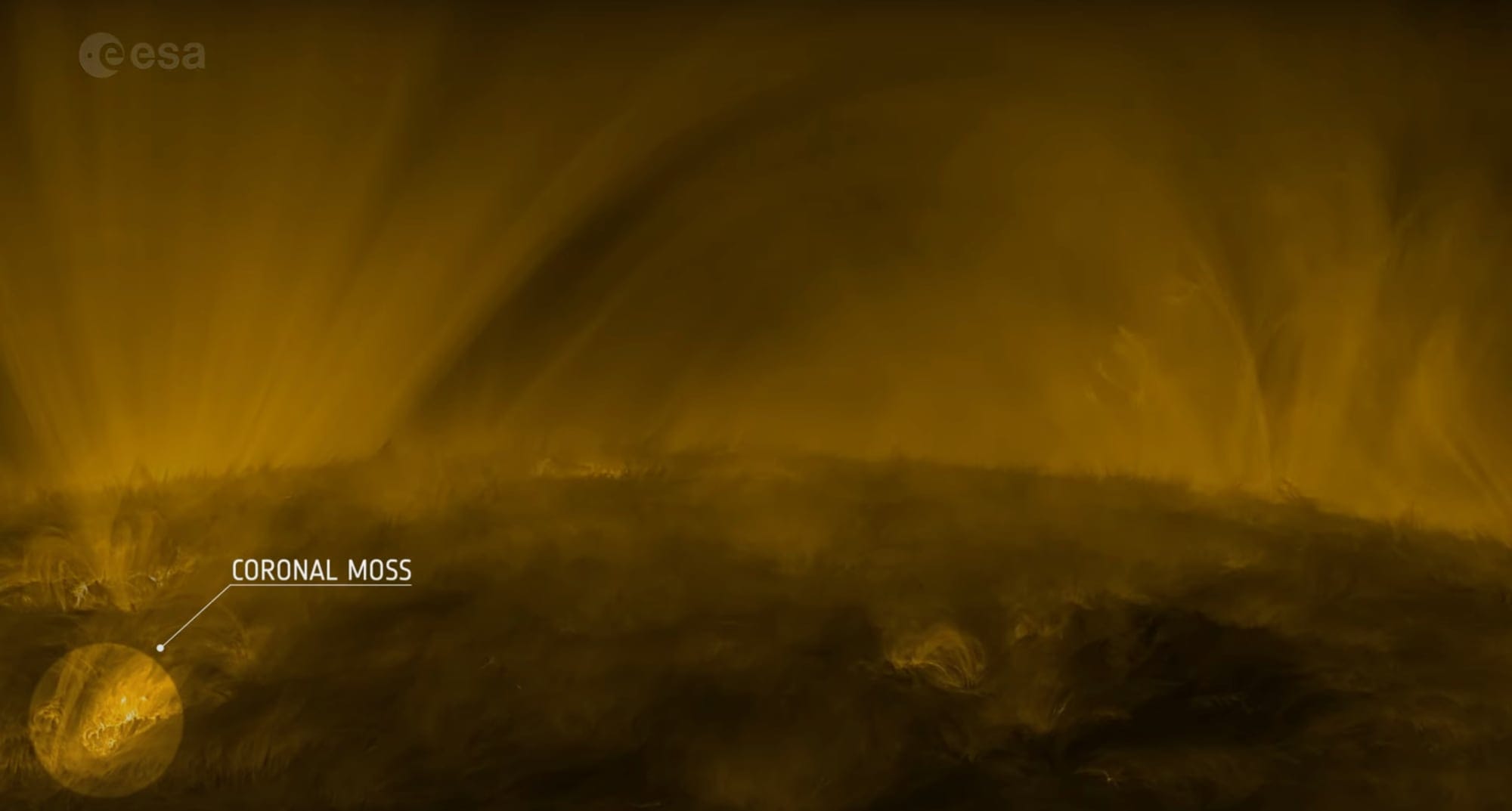This post was originally published on Colossal
A new video released by the European Space Agency (ESA) reveals the riotous activity of the sun’s atmosphere in unprecedented detail. Taken by the Solar Orbiter in September, the footage captures a lush blanket of “coronal moss” met by bright arches, or the magnetic field lines that shoot from the interior. Researchers say the brightest regions reach a whopping one million degrees Celsius—the cooler spots appear darker because they absorb radiation—and the “fluffy” hair-like structures are made of charged plasma.
As the video illustrates, spires of gas, a.k.a. spicules, shoot up along the horizon and sometimes soar 10,000 kilometers high. High-density clumps of plasma known as cool coronal rain are gravitationally sucked back into the atmosphere. There’s also a “small eruption” that occurs in the center of the frame that’s anything but small: the burst of light is larger than the earth.
This mind-boggling shift in perspective is, of course, due to the distance of the spacecraft from the sun. Since the Solar Orbiter launched in February 2020, it has continuously flown nearer to the star than any other instrument before it, reaching up to 42 million kilometers away. On this September mission, the orbiter was about 43 million kilometers away, which is about a third of the earth’s total distance from the sun.

Do stories and artists like this matter to you? Become a Colossal Member today and support independent arts publishing for as little as $5 per month. The article A New Video Captures Mossy Corona in the Sun’s Atmosphere in Extraordinary Detail appeared first on Colossal.





0 Comments